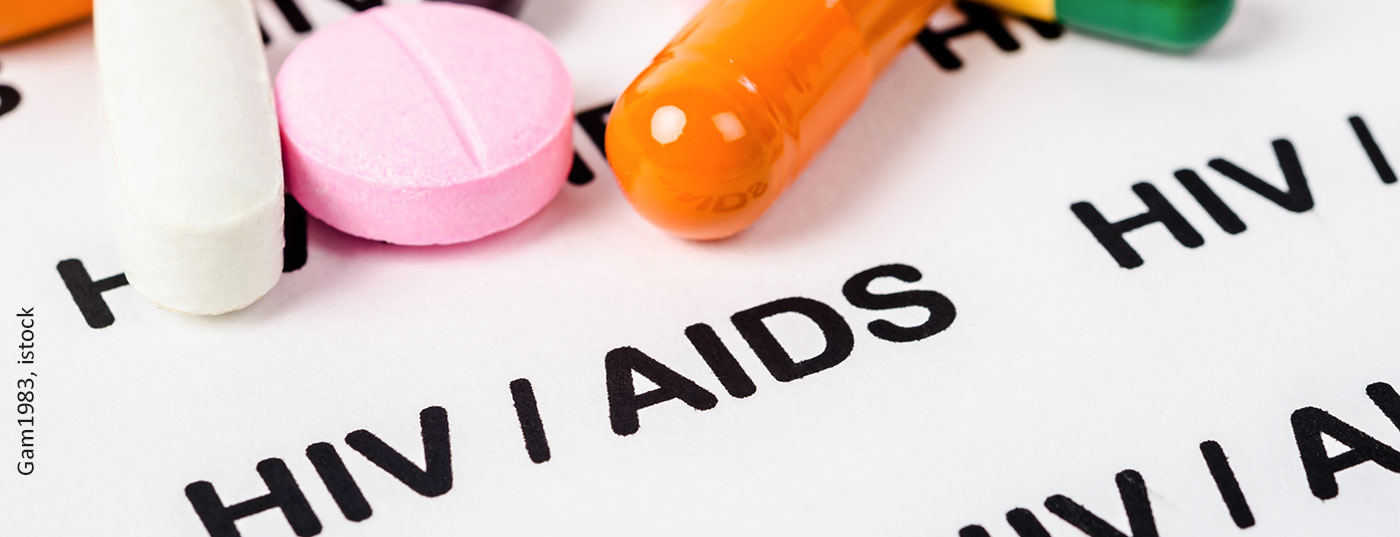There are increasing numbers of older people living with HIV, but the 65+ age group is generally underrepresented in clinical trials. An ongoing study in a “real world” setting is evaluating the virologic efficacy and safety of switching to a single-tablet regimen with bictegravir in this patient population. The interim analyses are promising.
Today, human immunodeficiency virus-1 (HIV-1) infection is a chronic disease that is not curable but is easily treatable, and if diagnosed in time, life expectancy is approximately normal. Modern antiretroviral therapies (ART) are generally well tolerated, which has a positive impact on treatment adherence. In addition, regimens requiring only one tablet daily were associated with higher adherence and lower hospitalization rates compared with two- or three-tablet regimens [1]. Tablet size and overall simplicity of therapy are also important adherence factors. In addition, because older HIV patients are at increased risk for comorbidities and polypharmacy, a favorable benefit-risk profile of ART is particularly important in this patient population.
Biktarvy®: high resistance barrier and low interaction potential
The antiviral drug Biktarvy® is a once-daily single-tablet regimen for the treatment of HIV-1 infection. The triple combination contains the unboosted integrase inhibitor bictegravir (BIC) and the two nucleoside/nucleotide reverse transcriptase inhibitors emtricitabine (FTC) and tenofoviralafenamide (TAF) [2]. In Switzerland, Biktarvy® is indicated for the treatment of HIV-1 infection in therapy-naïve adults, or to replace current antiretroviral therapy in patients who have no history of virologic treatment failure and who have been virologically suppressed for at least 6 months with stable antiretroviral therapy (HIV-1 RNA <50 copies/ml). In addition, HIV-1 mutations against the integrase inhibitor class, emtricitabine or tenofovir must not have been detected at any time. Biktarvy® (BIC/FTC/TAF) has a small tablet size and can be used independently of food intake. In clinical trials, this combination product showed low potential for interaction with other drugs and demonstrated a high barrier to resistance.
|
Antiretroviral therapy: viral load as the most important surrogate marker The primary goal of antiretroviral therapy is to reduce viral load below the clinical threshold of 50 HIV-1 RNA copies/mL [4]. This requires a permanent, usually lifelong intake of the drugs as well as an optimally coordinated combination of antiretroviral drugs so that no or only few resistances develop. Viral load is the most important surrogate marker for assessing therapeutic success. Viral load measurement also provides valuable information for evaluating the risk of disease progression. Levels above 100,000 HIV-1 RNA copies/ml are associated with more rapid disease progression. However, this is only a guideline value that can vary individually. |
Successful therapy change in elderly HIV patients
A 96-week study was conducted to evaluate the efficacy and safety of BIC/FTC/TAF in patients over 65 years of age who switched to this combination therapy [3]. This showed that the high rates of virologic suppression measured at week 24 were maintained through week 72 in this patient population. Subjects were virologically suppressed patients (HIV-1 RNA <50 copies/ml) who had been switched from either of the following antriretroviral therapies to BIC/FTC/TAF: elvitegravir (E)/cobicistat (C)/emtricitabine (FTC)/tenofoviralafenamide (TAF) or tenofovir disoproxil(TDF)-based regimen. The 86 study participants were included in the study in different centers in five European countries, the mean age was 69 years (range 65-80 yrs), 13% were female, 92% received E/C/FTC/TAF at baseline. At week 72, the proportion with HIV-1 RNA <50 copies/mL was 93% (80/86) [3]. Four of the subjects discontinued the study due to adverse events, with the last measured HIV-1 RNA levels <being 50 copies/mL and no data available from two study participants. Taking into account missing values and dropouts (n=6), a value of HIV-1 RNA <50 copies/ml was achieved in 100% at week 72. There were no cases of virological failure and no resistance developed. The median change in CD4 cell count was 53 cells/mm3 (interquartile range: -49, 120). There were two grade 3 to 4 adverse treatment-related events, a rate of 2%. A total of four adverse events led to premature discontinuation of study participation. There were no treatment discontinuations due to renal, osteologic, or hepatic adverse events.
In summary, efficacy and safety data from this study support a switch to Biktarvy® (BIC/FTC/TAF) in virologically suppressed HIV-infected persons ≥65 years of age.
Literature:
- Sax PE, et al: PLoS One 2012; 7(2):e31591. doi:10.1371/journal.pone.0031591.
- Swiss Drug Compendium, https://compendium.ch, (last accessed Oct. 15, 2021).
- Maggiolo F, et al: J Int AIDS Soc 2020 Oct; 23(Suppl 7): e25616.
- HIV Arbeitskreis Südwest: HIV Guide, www.hivleitfaden.de (last accessed Oct. 15, 2021).
HAUSARZT PRAXIS 2021; 16(10): 28











